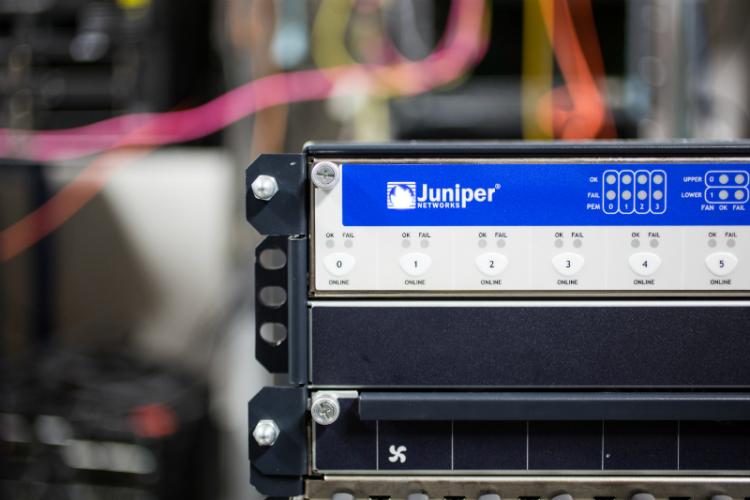Juniper DPC vs DPCE vs MPC Explained!
June 2019 Edit: We've got two new articles with updated information on MPCs. Check them out here:
and
Juniper MPC4 vs MPC5 100G differences
Juniper MX Series is one of the preferred choices for my customers looking for robust Edge Routing with scalability in a modular form-factor. While most users understand the basic functionality of the product line, the granular variations in card features can be very daunting to wrap your head around. The subject matter itself is complex enough to warrant an entire book for detail hungry users are entire books on the supported features alone! What I wanted to do is lay out an easy to understand brief about the most frequently asked questions I receive on the product line.
What is the routing capacity of the Juniper MX?
Unfortunately, Juniper's datasheets and documentation don't always readily share this information. It takes some digging but here's the important numbers: The MX series supports 16M/1M IPv4 routes RIB/FIB, 750k/750k IPv6 RIB/FIB, 4000/500/500 BGP/OSPF/IS-IS sessions and 2000 BGP Peers. Add that to the robust L2 performance and you've got yourself what we call in the biz a "big boy."
What is the difference between "enhanced" (DPCE) and non-enhanced line cards?
While the non-enhanced DPC (ie, DPC-R-4XGE-XFP) line cards are already EOL, many users familiar the savings that can be achieved by buying used still find them a great value! However, as it turns out the differences in the two are negligible for most applications. According to a knowledgeable Juniper user, in the enhanced DPCE cards (ie, DPCE-R-2XGE-20GE-SFP) have a slightly increased microcode size on the EZChip ASIC (1.5KB vs 6KB instruction space) which are used for L2 framing. Most users wouldn't even notice any tangible difference in performance between the two . Anecdotal, the only protocol that users have reported seeing some variance with older chipsets is PBB (Provider Backbone Bridging).
What does "Enhanced Queuing IP Services" offer?
In addition to the standard L3 features of the standard DPCE-R cards, DPCE-Q (ie, DPCE-R-Q-2XGE-20GE-SFP) offer improved QoS properties suited for service providers who support a high volume of customers, have a need for large routing tables, and require H-QoS to meet customer demands (SLAs).
- Support ingress queuing, scheduling, and shaping
- Classification using EXP for VPLS without tunnel
- ACL-based classification for ingress QoS Layer 2 policers: per-VLAN ingress policers and per-VLAN egress policers
- Match 802.1p and PLP in a firewall filter
- Rewrite inner packets 802.1p
- Rate limit per queue
- Includes DEI7 bit in 802.1p-based classification
- Double the number of subscribers, schedulers, shapers, and queues per DPC
- Multiple VLAN bundling (interface sets within interface sets)
- Class-aware hierarchical policers
MPC, MPC2, MPC3...How can I make sense of it all?
The MPC (Modular Pics Concentrator) is a new implementation of an existing idea for Juniper. Similar to Juniper's FPC cards that allow for modularity, the MPC (Modular Pics Concentrator) allows the services and features of the card to be handled separately from the physical port configuration, thus allowing greater range of configuration options for individual users. Simply put, it means you can put whatever MIC (Modular Interface Cards) you want in PIC0 and PIC1.
In addition to the modular benefits, the MPC family also is differentiated by the number and power of the trio chipset. The numbers after MPC denote the number of QXASIC and the maximum bandwidth each can handle. The MPC1 is Juniper's entry-level model and while intentional oversubscribed 2:1, allows for a up to 40Gbps bandwidth. However, it is important to note that because it only runs in UPOH mode, the MPC1 will only support The 2x10G MIC card and NOT the 4x10G like the cards with more processing power. MPC2, support full-line rate at 80Gbps allowing for up to eight 10G ports. Lastly, the MPC3 with three Trio chipsets can handle can handle 130Gbps at wire-speed.
If you have any questions or would like quotes on any Juniper MX series routers, give me a jingle or utilize our web chat!
Charles Hurbert
Terabit Systems
415-483-1190 Direct
AIM: chazfilez75
Sources:
https://www.juniper.net/techpubs/en_US/junos/topics/reference/general/mx...
https://www.juniper.net/techpubs/en_US/release-independent/junos/informa...

